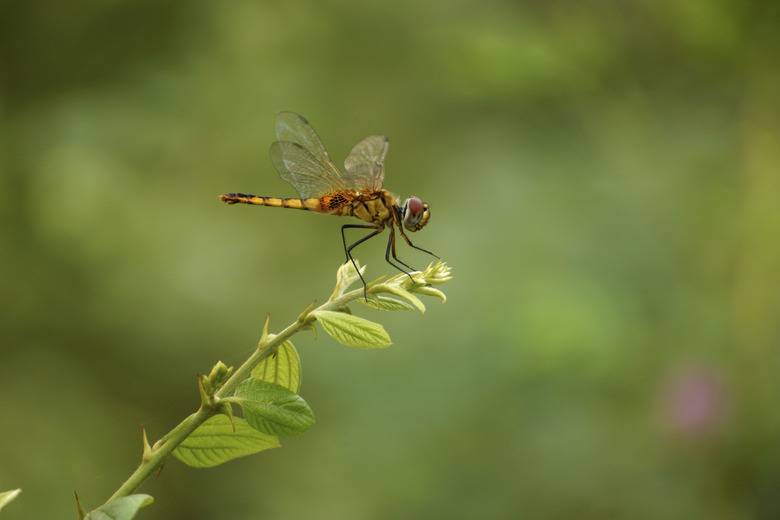Why Do I Have Dragonflies Swarming Around My House?
Large insects buzzing around rapidly are not usually popular, which can make dragonflies intimidating. But dragonflies are among the many insects considered by entomologists to be beneficial to landscapes. If you see large swarms around your home, consider yourself lucky. They're probably helping your yard and you don't even know it.
Description
Description
People often confuse dragonflies and damselflies. The distinction between the two is simple to see if you spot them at rest: Dragonfly wings are arranged perpendicular to the body, and damselfly wings are parallel. Dragonflies are in the taxonomical order Odonata, which means "toothed ones," because unlike many other insects, their jaws bear toothlike ridges. These ridges, along with their exceptional flying ability, make them successful predators. The green darner is one of the most prevalent types of dragonfly. Both its head and 2- to 3-inch long body are green, and it has a wingspan of 4 to 4 1/2 inches.
Life Cycle
Life Cycle
The dragonfly life cycle revolves around water, so the insect is usually found near lakes, streams, rivers or ponds. Females lay their eggs either in the water or on leaves or branches suspended over the water. Nymphs hatch and spend around two waterbound years growing and swimming. They usually go through metamorphosis from May to July and emerge as full adults. The adult life span is only about two to four weeks.
Beneficial Insects
Beneficial Insects
A dragonfly's connection to water goes beyond egg laying. If you're seeing them around your house, it may be because your yard harbors their favorite food: mosquitoes. A mosquito's life cycle is also closely allied with water, and standing water near your house, even in a birdbath, may be inadvertently breeding mosquitoes. Swarming dragonflies could be responding to a high mosquito population, but they also eat several fly species. It's best to let dragonflies be; they'll eat up pests, and they're fun to watch while they do it.
Migration
Migration
Another possibility for dragonfly swarms is migration. Only one species, the green darner, migrates, according to the Purdue University Cooperative Extension Service. After wintering in the southern United States, Caribbean and Mexico, green darners fly north in spring. When they reach their destination, they breed, and in August and September, the newly hatched adults move back south. Each generation only makes one leg of the trip, but this migration allows them to spend breeding seasons in mosquito-rich areas. If you live in the path of migrating green darners, you may suddenly see thousands of them around your house as they rest before moving on.
